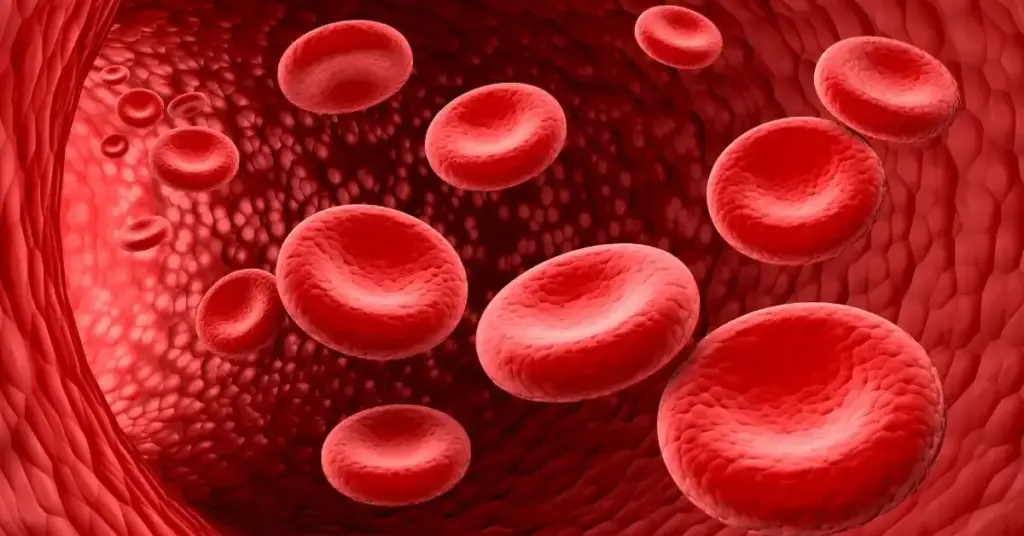
Hematologic cancers, also known as blood cancers, affect the bone marrow, lymphatic system, and blood by disrupting the normal production and function of blood cells, potentially leading to life-threatening complications if not treated promptly. These cancers include leukemia, lymphoma, and multiple myeloma—each with distinct characteristics but a shared origin in the blood-forming tissues. They account for approximately 10% of all new cancer diagnoses annually worldwide, highlighting their significant global impact.
With advancements in diagnostics, targeted therapies, and stem cell transplantation, patient outcomes have improved remarkably. Despite this progress, early detection and specialized care remain crucial for effective treatment and long-term survival. As understanding of blood cancers deepens, personalized treatment plans are transforming patient care. Precision in diagnosis and therapy selection plays a vital role in enhancing quality of life. Comprehensive care through hematologic cancers treatment in chennai ensures a holistic approach, combining advanced clinical expertise with compassionate support for patients and their families.
Leukemia is a type of blood cancer that begins in the bone marrow, causing abnormal growth of white blood cells. It is broadly categorized into four types: Acute Lymphoblastic Leukemia (ALL), Acute Myeloid Leukemia (AML), Chronic Lymphocytic Leukemia (CLL), and Chronic Myeloid Leukemia (CML). Acute forms progress rapidly and require urgent intervention, whereas chronic types develop more slowly and may be managed over longer periods.
Common symptoms include fatigue, frequent infections, easy bruising or bleeding, and bone pain. Diagnosis is established through blood tests, bone marrow biopsy, and cytogenetic analysis. Treatment may involve chemotherapy, targeted therapy, or hematopoietic stem cell transplantation depending on disease subtype and patient profile. Emerging therapies such as CAR T-cell therapy are reshaping the treatment landscape, offering hope in relapsed cases. Multidisciplinary care ensures that patients receive precise, timely, and effective interventions, significantly improving survival rates and quality of life.
Lymphoma is a cancer of the lymphatic system, which includes lymph nodes, spleen, and other immune-related tissues. It is primarily divided into two categories: Hodgkin Lymphoma (HL) and Non-Hodgkin Lymphoma (NHL). Each type has its own cellular origin, progression pattern, and treatment approach. The key distinguishing feature of Hodgkin Lymphoma is the presence of Reed-Sternberg cells, detectable under microscopic examination.
Symptoms commonly include painless lymph node swelling, night sweats, unexplained weight loss, fever, and persistent fatigue. Diagnostic processes involve lymph node biopsy, PET scans, and immunophenotyping. Treatment varies from chemotherapy and radiation therapy to immunotherapy and monoclonal antibodies like rituximab. High-grade lymphomas treatment may require more aggressive treatment, while low-grade forms may be managed with watchful waiting.
Personalized therapy and molecular profiling are enhancing outcomes and reducing side effects. Early and accurate classification of the lymphoma type is crucial to initiating the most appropriate therapy. Timely intervention guided by experienced hemato-oncologists through hematologic cancers treatment in chennai significantly increases the chances of remission and long-term disease control.
Multiple myeloma is a hematologic cancer that originates in plasma cells—specialized white blood cells responsible for antibody production. When these cells become malignant, they accumulate in the bone marrow, interfere with normal blood cell production, and release abnormal proteins that can damage vital organs. It typically affects older adults and is characterized by bone pain, recurrent infections, fatigue, and kidney dysfunction.
Diagnosis involves serum protein electrophoresis, bone marrow biopsy, and imaging studies such as MRI or PET scans. Treatment options include chemotherapy, immunomodulatory drugs (such as lenalidomide), proteasome inhibitors, corticosteroids, and autologous stem cell transplantation. Newer agents like monoclonal antibodies and CAR T-cell therapies have significantly advanced treatment possibilities.
While multiple myeloma is generally considered incurable, it is highly treatable, and many patients achieve long-term disease control. Maintenance therapy and regular monitoring help prolong remission periods. Early identification and tailored therapy plans, including support for bone health and renal function, are essential for improving quality of life. Specialized centers offering hematologic cancers treatment in Chennai provide integrated care that addresses both the clinical and supportive needs of patients.
Accurate diagnosis of hematologic cancers relies on a combination of advanced diagnostic tools and expert interpretation. Diagnostic pathways typically involve blood tests, bone marrow biopsy, imaging studies, and immunophenotyping to identify and classify hematologic cancers. Each modality contributes vital information needed to classify and stage the disease, enabling the formulation of a precise treatment plan.
Lymph node biopsies are standard for diagnosing lymphoma, while imaging modalities like CT and PET scans provide insight into disease spread and response to treatment. Laboratory investigations also detect monoclonal proteins in cases like multiple myeloma. The combination of these diagnostic techniques provides a thorough and accurate evaluation of the disease. Timely, accurate diagnosis enables early initiation of appropriate therapy, which can significantly impact outcomes.
Advanced laboratories and pathology units within specialized centers ensure that diagnoses are precise, reproducible, and aligned with international standards. Interdisciplinary review of diagnostic findings ensures the integration of clinical, radiologic, and molecular data, establishing a firm foundation for personalized treatment plans.
Hemato-oncology hospitals focus on the comprehensive diagnosis, treatment, and ongoing management of blood cancers. These centers offer an integrated, multidisciplinary approach that combines oncology, hematology, pathology, radiology, and supportive care services. Such hospitals serve as critical hubs for patients requiring advanced diagnostic work-ups, individualized therapy, and regular monitoring throughout their treatment journey.
Hospitals are often equipped with infusion centers, bone marrow transplant units, and laboratories for real-time diagnostics. Physicians collaborate in tumor boards to formulate evidence-based treatment strategies tailored to each patient’s clinical condition and genetic profile. Hemato-oncology clinics providing hematologic cancers treatment in Chennai also serve as centers for clinical trials, giving patients access to the latest therapies and investigational drugs.
Regular follow-up and surveillance strategies help detect relapses early and manage late effects of therapy. These clinics not only focus on disease eradication but also prioritize quality of life and holistic recovery. The coordinated efforts within a hemato-oncology clinic greatly enhance patient satisfaction and clinical outcomes, establishing a gold standard in hematologic cancer care.
Hematologic cancers represent some of the most complex malignancies, requiring precision in diagnosis and individualized treatment plans. From leukemia to lymphoma and multiple myeloma, each type presents unique challenges and demands a nuanced approach. Advances in molecular biology, immunotherapy, and stem cell transplantation have transformed the landscape of blood cancer management. Diagnostic pathways like biopsies and flow cytometry ensure early and accurate identification, while specialized hemato-oncology clinics offer comprehensive, patient-centered care.
At Kannappa Memorial Hospital, patients benefit from state-of-the-art facilities and a dedicated team of specialists who are committed to delivering exceptional care across all stages of hematologic cancer. Whether undergoing initial diagnosis, active treatment, or long-term follow-up, patients receive support that is both clinically robust and compassionately delivered. With timely intervention and personalized care through hematologic cancers treatment in chennai, many patients not only survive but also regain their quality of life, moving forward with renewed strength and hope.
Hematologic cancers, also known as blood cancers, affect the bone marrow, lymphatic system, and blood by disrupting the normal production and function of blood cells, potentially leading to life-threatening complications if not treated promptly. These cancers include leukemia, lymphoma, and multiple myeloma—each with distinct characteristics but a shared origin in the blood-forming tissues. They account for approximately 10% of all new cancer diagnoses annually worldwide, highlighting their significant global impact.
With advancements in diagnostics, targeted therapies, and stem cell transplantation, patient outcomes have improved remarkably. Despite this progress, early detection and specialized care remain crucial for effective treatment and long-term survival. As understanding of blood cancers deepens, personalized treatment plans are transforming patient care. Precision in diagnosis and therapy selection plays a vital role in enhancing quality of life. Comprehensive care through hematologic cancers treatment in chennai ensures a holistic approach, combining advanced clinical expertise with compassionate support for patients and their families.
Leukemia
Lymphoma
Multiple Myeloma
Diagnostic Pathways
Treatment Options for Hematologic Cancers
Hemato-Oncology Hospitals
Conclusion
Leukemia is a type of blood cancer that begins in the bone marrow, causing abnormal growth of white blood cells. It is broadly categorized into four types: Acute Lymphoblastic Leukemia (ALL), Acute Myeloid Leukemia (AML), Chronic Lymphocytic Leukemia (CLL), and Chronic Myeloid Leukemia (CML). Acute forms progress rapidly and require urgent intervention, whereas chronic types develop more slowly and may be managed over longer periods.
Common symptoms include fatigue, frequent infections, easy bruising or bleeding, and bone pain. Diagnosis is established through blood tests, bone marrow biopsy, and cytogenetic analysis. Treatment may involve chemotherapy, targeted therapy, or hematopoietic stem cell transplantation depending on disease subtype and patient profile. Emerging therapies such as CAR T-cell therapy are reshaping the treatment landscape, offering hope in relapsed cases. Multidisciplinary care ensures that patients receive precise, timely, and effective interventions, significantly improving survival rates and quality of life.
Lymphoma is a cancer of the lymphatic system, which includes lymph nodes, spleen, and other immune-related tissues. It is primarily divided into two categories: Hodgkin Lymphoma (HL) and Non-Hodgkin Lymphoma (NHL). Each type has its own cellular origin, progression pattern, and treatment approach. The key distinguishing feature of Hodgkin Lymphoma is the presence of Reed-Sternberg cells, detectable under microscopic examination.
Symptoms commonly include painless lymph node swelling, night sweats, unexplained weight loss, fever, and persistent fatigue. Diagnostic processes involve lymph node biopsy, PET scans, and immunophenotyping. Treatment varies from chemotherapy and radiation therapy to immunotherapy and monoclonal antibodies like rituximab. High-grade lymphomas treatment may require more aggressive treatment, while low-grade forms may be managed with watchful waiting.
Personalized therapy and molecular profiling are enhancing outcomes and reducing side effects. Early and accurate classification of the lymphoma type is crucial to initiating the most appropriate therapy. Timely intervention guided by experienced hemato-oncologists through hematologic cancers treatment in chennai significantly increases the chances of remission and long-term disease control.
Multiple myeloma is a hematologic cancer that originates in plasma cells—specialized white blood cells responsible for antibody production. When these cells become malignant, they accumulate in the bone marrow, interfere with normal blood cell production, and release abnormal proteins that can damage vital organs. It typically affects older adults and is characterized by bone pain, recurrent infections, fatigue, and kidney dysfunction.
Diagnosis involves serum protein electrophoresis, bone marrow biopsy, and imaging studies such as MRI or PET scans. Treatment options include chemotherapy, immunomodulatory drugs (such as lenalidomide), proteasome inhibitors, corticosteroids, and autologous stem cell transplantation. Newer agents like monoclonal antibodies and CAR T-cell therapies have significantly advanced treatment possibilities.
While multiple myeloma is generally considered incurable, it is highly treatable, and many patients achieve long-term disease control. Maintenance therapy and regular monitoring help prolong remission periods. Early identification and tailored therapy plans, including support for bone health and renal function, are essential for improving quality of life. Specialized centers offering hematologic cancers treatment in Chennai provide integrated care that addresses both the clinical and supportive needs of patients.
Accurate diagnosis of hematologic cancers relies on a combination of advanced diagnostic tools and expert interpretation. Diagnostic pathways typically involve blood tests, bone marrow biopsy, imaging studies, and immunophenotyping to identify and classify hematologic cancers. Each modality contributes vital information needed to classify and stage the disease, enabling the formulation of a precise treatment plan.
Lymph node biopsies are standard for diagnosing lymphoma, while imaging modalities like CT and PET scans provide insight into disease spread and response to treatment. Laboratory investigations also detect monoclonal proteins in cases like multiple myeloma. The combination of these diagnostic techniques provides a thorough and accurate evaluation of the disease. Timely, accurate diagnosis enables early initiation of appropriate therapy, which can significantly impact outcomes.
Advanced laboratories and pathology units within specialized centers ensure that diagnoses are precise, reproducible, and aligned with international standards. Interdisciplinary review of diagnostic findings ensures the integration of clinical, radiologic, and molecular data, establishing a firm foundation for personalized treatment plans.
Hemato-oncology hospitals focus on the comprehensive diagnosis, treatment, and ongoing management of blood cancers. These centers offer an integrated, multidisciplinary approach that combines oncology, hematology, pathology, radiology, and supportive care services. Such hospitals serve as critical hubs for patients requiring advanced diagnostic work-ups, individualized therapy, and regular monitoring throughout their treatment journey.
Hospitals are often equipped with infusion centers, bone marrow transplant units, and laboratories for real-time diagnostics. Physicians collaborate in tumor boards to formulate evidence-based treatment strategies tailored to each patient’s clinical condition and genetic profile. Hemato-oncology clinics providing hematologic cancers treatment in Chennai also serve as centers for clinical trials, giving patients access to the latest therapies and investigational drugs.
Regular follow-up and surveillance strategies help detect relapses early and manage late effects of therapy. These clinics not only focus on disease eradication but also prioritize quality of life and holistic recovery. The coordinated efforts within a hemato-oncology clinic greatly enhance patient satisfaction and clinical outcomes, establishing a gold standard in hematologic cancer care.
Hematologic cancers represent some of the most complex malignancies, requiring precision in diagnosis and individualized treatment plans. From leukemia to lymphoma and multiple myeloma, each type presents unique challenges and demands a nuanced approach. Advances in molecular biology, immunotherapy, and stem cell transplantation have transformed the landscape of blood cancer management. Diagnostic pathways like biopsies and flow cytometry ensure early and accurate identification, while specialized hemato-oncology clinics offer comprehensive, patient-centered care.
At Kannappa Memorial Hospital, patients benefit from state-of-the-art facilities and a dedicated team of specialists who are committed to delivering exceptional care across all stages of hematologic cancer. Whether undergoing initial diagnosis, active treatment, or long-term follow-up, patients receive support that is both clinically robust and compassionately delivered. With timely intervention and personalized care through hematologic cancers treatment in chennai, many patients not only survive but also regain their quality of life, moving forward with renewed strength and hope.
The most common hematologic cancers are leukemia, lymphoma, and multiple myeloma. Each originates in different blood components—leukemia from bone marrow and white blood cells, lymphoma from lymphatic tissue, and myeloma from plasma cells. These cancers vary widely in symptoms, progression, and treatment responses. Early diagnosis and targeted therapies have significantly improved outcomes, especially when managed within specialized hemato-oncology settings.
Hematologic cancer refers to malignancies that affect the blood, bone marrow, or lymphatic system. These cancers disrupt normal blood cell production and function, leading to anemia, infections, and bleeding problems. Unlike solid tumors, they often spread throughout the body via the bloodstream or lymph system. Treatment typically involves chemotherapy, targeted therapy, or stem cell transplants, depending on the type and stage of the disease.
Some hematologic cancers are curable, especially when detected early and treated appropriately. For example, many cases of Hodgkin lymphoma and certain leukemias can be cured with current therapies. Others, like multiple myeloma, may not be curable but can be effectively managed over the long term. Continuous advancements in research and therapy are steadily increasing cure rates and long-term survival.
Common symptoms include fatigue, unexplained weight loss, night sweats, frequent infections, and swollen lymph nodes. Patients may also experience bruising, bone pain, or recurrent fevers. These symptoms can be subtle or overlap with other conditions, making accurate diagnosis essential. If any of these signs persist, a comprehensive evaluation by a hematologist or oncologist is recommended to rule out or confirm a blood-related malignancy.





